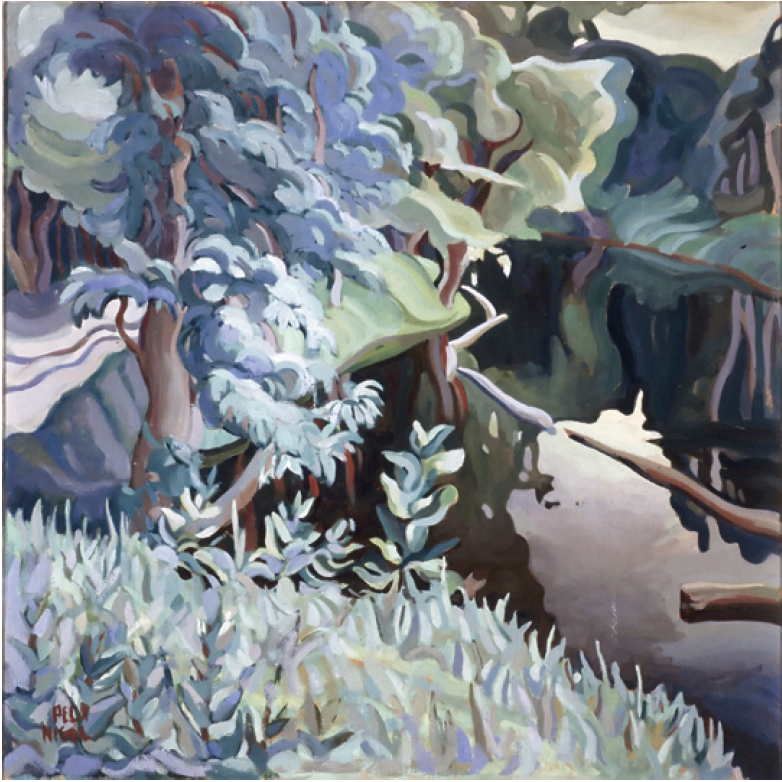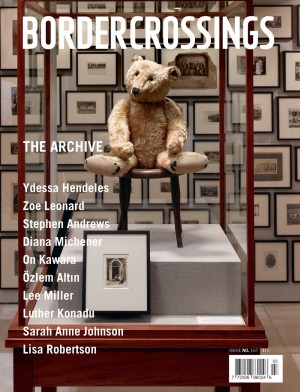Pegi Nicol MacLeod
“Pegi Nicol MacLeod: A Life in Art” is a travelling exhibition organized and circulated across Canada by the Carleton University Art Gallery. It features over 55 paintings in oil and watercolour by this Ottawa-born artist, whose life spans the first half of the 20th century. Dr. Laura Brandon, the guest curator, has also released a biography of the artist, Pegi by Herself: The Life of Pegi Nicol MacLeod, Canadian Artist, published by McGill-Queen’s University Press. A National Film Board of Canada production, Something Dancing About Her, with its moving and original musical score, directed by Michael Ostroff, completes the exhibition, book and film trilogy—a Venn diagram of overlapping and compatible parts. Brandon, curator at the Canadian War Museum, is the originator of the new material about MacLeod, building upon the artist’s correspondence published by art historian Joan Murray in 1984.
Brandon is a thorough researcher and an excellent social historian who extracts relevant commentaries from oral informants, the critical literature and the correspondence to construct a well-paced and readable biography, complete with voluminous notes, proofs and supplements. Brandon is grounded in the historiography of Canadian women artists and feminist theorizations about how women’s lives are written. Here, clear and clean storytelling eclipses any weighty theoretical pronouncement. Brandon admirably distils complex events and private emotional states in thoughtful and concise ways. The chronological narrative is structured by shifts in Nicol MacLeod’s career, geographical location or love partners. Brandon begins this chapter using photographs to mobilize interpretations about MacLeod’s psychological state or life-cycle events. Her intuitive readings of these photographs are often better than interpretations of some paintings, which are hamstrung by literal iconographical approaches to interpretation. Her previous focus on the artist’s relationship to self-portraiture is a strength and an interest that emerges, clearly inspired by Nicol MacLeod’s lifelong practice in this genre.

Pegi Nicol MacLeod, My Western Cousin, c 1927-29, oil on board. Private collection. Courtesy the Winnipeg Art Gallery.
If this were a “hotter” country—one fuelled by commerce and not councils for the arts-the marketing material might have emphasized the bite, sizzle and daring of Nicol MacLeod’s sexual bohemianism. “Bad Girl” or “The Canadian Frida Kahlo” might well have been employed to hint at a lifestyle that is the antithesis of Emily Carr’s asexuality. Any potential sensationalism, though, has undergone a Canadian catharsis, where nude and prude have a long, entangled relationship. Nicol MacLeod’s life and art intersect with the art historical and cultural enterprises of her day. If you know the modest history of Canadian art in the first half of the 20th century, the excitement comes in reading about Nicol MacLeod’s exploits and involvements. Her assimilation of influences and her stylistic development and choices expand our knowledge of the shape and complexity of these moments. The dominance of the Group of Seven as the central, structuring narrative for all interwar Canadian art stories recedes to the background.
A partial hit list of Nicol MacLeod’s polymorphous run-ins with Canadian art history would include: her relationship with Eric Brown, Director of the National Gallery; summering with the Vincent Massey family (the creator of the Massey Commission that led to the Canada Council); a lifelong sharing of confidences with artist Marian Dale Scott; and exhibiting with Emily Carr at the important 1927 “West Coast Art: Traditional and Modern,” rating an entry in Emily Carr’s journal. MacLeod painted theatre sets at Hart House, Christmas murals at Eaton’s and a mural for Norman Bethune before he left for the Spanish Civil War. She travelled up the Skeena River Valley, courtesy of the CPR, to paint the “Indians” at the behest of Canadian Museum Director Marius Barbeau. She romped in the Gatineau Hills with friends as they drew each other naked. Bertram Brooker, theosophist and first Abstract painter in Canada, published her work in his 1936 Yearbook of the Arts in Canada. For a brief period, she was art editor for Canadian Forum. Nicol MacLeod wrote art reviews, painted, exhibited and moved from Ottawa, Montreal, Toronto to Fredericton and Manhattan. Her apotheosis and self-proclaimed joy came near the end of her life, when she was given a National Gallery commission to paint women involved in WWIl service in Ottawa.
It’s an intensely Canadian story-one that lends itself to rich art historical comparisons that are implicit in the book, but which can be measured and considered in relation to the touring exhibition. How, for example, do her portraits differ from Carr’s? How is the influence of David Milne or Miller Britain made manifest? As the commentaries of her artist/critic friends attest, she had a vital, energetic and extroverted personality, which sometimes led to unresolved and dissipated energies with respect to her paintings. Her landscapes look different from, but are informed by, A.Y. Jackson’s. Her figures are more awkwardly drawn than Bertram Brooker’s, albeit more sensuous. David Milne’s adaptations of post-Impressionist and cloisonné-like divisions of the canvas seem evident in her work, as do the later robust and intelligent faces and bodies typical of the east-coast artist Miller Britain.

Pegi Nicol MacLeod, The Log Run, c 1930, oil on board. Collection Laura and Byrne Harper, Courtesy the Winnipeg Art Gallery.
Projects of retrieval and expansion in art history fuel the academic machine and the archive. They also bring about a certain amount of canon busting and reformation as they ask us to consider the relationship of new artists to the existing narratives. The modernist narrative in Canadian painting is dominated by male members and landscape storylines. Viewing the exhibition after reading the biography is revealing. Many of the colours have a muddy quality. Other paintings employ what looks like Matisse’s North African palette. Accurate drawing, light and shadow are often ignored Consistent tonal ranges make deciphering over-busy compositions more difficult. Exquisite, tiny self-portraits and mother and daughter paintings show the force of her personality. The war work utilized post-Cubist and vorticist repetitions before the artist’s life was cut short at age 45. Spontaneity and affection ruled.
True, there may be too many works, an impulse that reflects upon the joy of discovery and the constant amassing of detail necessary for a groundbreaking biographical work. The impulse to excess in curation is sometimes deleterious in constructing an exhibition of consistent, high quality. Yet Brandon’s intentions across the book and the exhibition appear to be about locating a heretofore little-known female artist in relation to her self and the multiple others in Canadian art. In this, she has made an immense contribution to the study of Canadian women artists, one bound to affect subsequent narratives and exhibitions. Adherence to that ineffable bugbear, “quality” in art, would have forced Brandon to omit quirky paintings such as Children in Pliofilm of 1939. Thanks to Brandon, Nicol MacLeod presents herself at the margins. The sifting, categorization and integration of the visual works will undoubtedly follow. A vivacious, energetic and lively spirit emerges-extrovert, gamine, athlete, teacher, daughter, lover, mother, friend and artist. ❚
“Pegi Nicol MacLeod: A Life in Art” exhibited at the Carleton University Art Gallery in Ottawa from February 7 to April 17, 2005. The exhibition will travel to the Winnipeg Art Gallery from May 21 to July 31, 2005, to the Robert McLaughlin Gallery in Oshawa from September 9 to November 6, 2005, and to the Beaverbrook Art Gallery in Fredericton from March 18 to May 28, 2006. Pegi by Herself: The Life of Pegi Nicol MacLeod, Canadian Artist by Laura Brandon, Montreal: McGill-Queen’s University Press, 2005. Hardcover, 280 pp, $39.95. Pegi Nicol: Something Dancing About Her, a National Film Board production, directed by Michael Ostroff. 72 mins, 2005.
Amy Karlinsky recently curated “figure ground: paintings and drawings by Ivan Eyre” for the Winnipeg Art Gallery.

